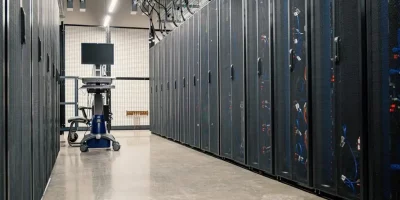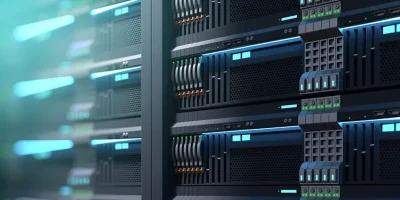Technology for data centers is constantly updating. Therefore, upgrading hardware may appear to be less than the costs associated with doing nothing. However, not upgrading your equipment when required can be far more costly in the long run.
There’s always a push to keep costs and performance low with an established data center. As a result, IT executives must stay up to speed on the technologies that may make their current infrastructure as efficient as possible as new technologies emerge and external factors influence business costs. Understanding these technologies and how they might affect your data center efficiency lays the groundwork for making critical decisions about its near future.
Data center management and upgrading a current data center entails making the appropriate selections to achieve energy efficiency improvements.
How do I update my data center?
A data center upgrade is a lot like a house renovation project; it needs planning, money, and finesse to ensure that existing infrastructure isn’t harmed. But, of course, there are also choices of skipping the remodel and living in a condo with homeowner’s association fees.
Before tackling a data center upgrade, administrators must make several vital choices. It’s an expensive, time-consuming, and hazardous endeavor in today’s cloud world. If admins choose to upgrade the data center, they should understand how to do it without disrupting operations.
How can you make a data center more efficient?
The lifeblood of any modern business, data centers, are becoming increasingly difficult to manage. Maintaining a data center as efficiently as possible may help a company save money—but how? The following are some ideas to improve the performance of any data center’s existing facilities.
Efficiency starts with architecture.
The structure of a data center and how equipment is deployed are two significant factors impacting efficiency. Design flaws can impede energy efficiency, prevent servers from functioning at peak performance, and cause heating concerns. Even if you have a solid strategy for connecting your hardware, it’s critical to employ the unlimited data and power consumption cable.
Not all data matters
There’s more information in the world than ever before, and it’s growing at an increasing rate. While most of this data may be analyzed and put to good use, a portion of it isn’t suitable for analysis and takes up digital storage space. Failing to solve this problem can be costly. Data hygiene is the answer. Unused data must be classed and migrated for hardware space to be freed up and used for essential data processing. This may also assist reduce server workload, which can extend the life of hardware and save money.
DCIM
Most modern data centres require a data center infrastructure management (DCIM) solution. DCIM offers real-time insight into important system information, such as cooling, power usage, network traffic, and more. Without real-time feedback from DCIM, it’s nearly impossible to keep data centre services under control. Because any problem, no matter how big or little, is unpredictable and almost certainly won’t be noticed until a level of service outage occurs. Many organizations choose to maintain as much critical data as possible onsite.
Keeping your cool
Even individual computers may run into problems with overheating. Multiply that by racks and racks of servers, all tightly configured within the confines of a busy data center. You have a potential severe hardware failure due to overheating if it isn’t adequately cooled. Spending a lot of money on data infrastructure only to have it fail because you didn’t create innovative cooling solutions is a scenario that should be avoided. It’s critical to ensure that air conditioning removes the waste heat generated by computer equipment. Some devices even recycle hot air and pump it back into the data center after cooling it.
Hardware refresh
Maintaining data center infrastructure efficiency is critical to ensuring continued operation. Every component in a data center, from servers to efficient cooling systems, power distribution units (PDUs), and power supplies, has an expiration date. It’s not just about whether or not these things will fail. Keeping them for too long may be costly. In addition, the world is continuously changing, evolving, and progressing. Implementing decent refresh practices may assist you in determining the ideal moment to replace hardware before it becomes too costly.
Ten tips for planning a data center hardware refresh
Establish current hardware specs and performance statistics
Assuming you already have a data center’s worth of existing systems that fulfill various functions depending on your company’s activities. Then, make sure you have all of the current specifications and performance statistics to see how well they perform.
Is it true that some boxes are operating nearly at capacity? Those would probably rank highly in the list of candidates for replacement (assuming you can’t reduce the workload on the boxes by removing redundant items or services or rerouting them to other locations).
Are there any operating systems that are functioning well and have enough resources? Of course, but if the support or hardware were on its way out, they’d be at the bottom of the list for replacement.
Establish and update business and user needs
Examine your current redundant systems and the business and user demands they meet. For example, perhaps they require document storage, collaboration tools, virtualization hypervisors, alerting systems, etc. Each requirement should be relatively simple: 3 Tb of data storage for files, for example, or a 200-user license for collaborative software.
Explore alternate options
Consider whether alternative solutions are accessible to help you cut expenses and enhance performance rather than simply upgrading all hardware and equipment.
Look at performance and functionality benefits.
The primary goal of replacing server hardware (besides because it is near the end of its useful life) should be to gain from improved performance and functionality. This aspect is motivated by the desire to optimize what you’ve got. A significant incentive for doing so is the capability to scale up and improve your resources.
Focus on ensuring that the data you gathered in Step 2 (business and user needs), which will be applied here, is appropriate for your situation. For example, if you do not need all of the space, keep in mind that extra capacity is available for your area.
Consider infrastructural costs
The costs of infrastructure and the savings produced by a server refresh project might have an important role to play.
New technologies may be more energy-efficient, take up less space, and require fewer repairs, And these are just the initial costs! When you start factoring in everything, including expenses and investments, it quickly becomes clear how important it is to think carefully before making a new purchase.
Consider repurposing retired servers.
If you want to get rid of your old equipment, there’s no need to take everything apart and toss it in the garbage or recycle bin. If you decide to do this, make sure you securely erase the hard drives first. The ability to repurpose servers for other purposes can help you complete a hardware refresh project. Put another way, do a “hand me down” approach, where Server A is replaced with a new system and then becomes Server B after being reconstructed.
Consider labor costs
When calculating the anticipated expenditures, consider your IT personnel’s time on this refresh project. Let’s suppose that it will take four weeks to complete the project; each person would get paid for four weeks. Unfortunately, it also implies that they’ll be out of commission for four weeks, which might negatively influence company operations.
On the other side, you should consider how much time will be spent on the proposed improvements and how employees will benefit by being able to spend minor time troubleshooting and assisting old systems that are prone to performance or operational issues.
Ensure consistency across the board
To avoid having various distinct systems with varied support contracts and different parts, drivers, etc., I propose sticking to one vendor. However, it would help if you also mapped multiple sorts of servers to a typical data center hardware footprint.
If you have ten application servers, make sure they have the same specs (16 GB RAM, 100 GB hard drive space, four quad-core CPUs). If possible, set up all of your database servers with local or SAN-based storage (don’t mix and match).
Focus on standalone servers first
In computing, having more servers isn’t always preferable. Redundant servers, which are frequently used for critical functions, are less likely to cause a service outage since there are many of them. Replace the standalone servers first, then move on to redundant clusters or groups (particularly if they’re on the verge of mechanical failure).
Of course, properly moving all functions and processing from the decommissioned servers to the remaining active systems should be carefully planned and carried out.
Implement an orderly upgrade process
If feasible, move from the least critical to the most critical servers. With this, you’ll be able to test everything first, revert any mistakes, and minimize the amount of unfavorable influence on your company’s operations. Don’t forget to set performance metrics as you put new systems into place to know what to anticipate from them.
Data Center Upgrade Checklist
Formulate a Plan
After you’ve decided to upgrade an existing property, notify everyone who might be impacted. When workers are aware that their business might be hampered during an upgrade, they can prepare and get organized in the event of a possible outage. Contractors can help you save time and money by speeding up the upgrade process. You don’t want to divert IT personnel from their normal duties. Make sure that contractors are aware of their role in the existing system upgrade and operate in tandem with other teams.
Identify the Challenges
When organizations upgrade their IT systems, they must first inventory their existing equipment. Are they energy-efficient? What is the state of their existing infrastructure and how will the new equipment fit in? How much power do they consume and what are the cooling needs? How will the new technology affect your current system? Take a good look around the workplace for any significant flaws, such as dropped ceiling tiles or construction-site hazards.
Another thing to consider is whether there are any security gaps that hackers might exploit. Finally, assess the facility’s cabling. Is it in good shape or worn? A detailed inspection of IT equipment may reveal what upgrades are required.
Risk Mitigation
When deciding on data center upgrades, it’s essential to conduct an impact assessment. The impact on your company’s productivity should be the first consideration. This is an extension of business continuity planning. Security within your building demands additional attention. Data centers are supposed to be secure at all times. Keep track of who comes and goes. Because the data center is about to become a work zone, try your best to minimize clutter and stay organized. IT equipment is delicate to both temperature and humidity levels. To put it another way, pay attention to the dust.
Hardware
For decades, information technology’s exponential growth in performance and storage capacity has been the critical enabler. However, the end of voltage scaling in semiconductor chips has made all computer systems, from mobile phones to massive data centers, renewable energy limited. Furthermore, emerging nanotechnologies provide innovative possibilities for revolutionizing energy-efficient construction through new transistor and memory technologies and three-dimensional integration.
Software
Large businesses, both national and international, employ the advantages of Cloud Computing (CC) to store data, software solutions, and programs. However, the energy consumption of data centers is considerable, and cloud computing raises environmental concerns by necessitating the use of highly sophisticated and complicated software. Most of the time, energy is lost, and alternative methods to reduce carbon emissions in a CC environment are required. From a software standpoint, several improvements may be made in terms of energy efficiency by monitoring and paying attention to the energy usage aspects of cloud-based applications.
The purpose of the present study is to propose a framework that includes an extra phase called parameterized development, which would be added to the conventional Software Development Life cycle (SDLC) where developers must take into account the suggested methods while developing software for cloud services use and contributing to green computing.
The Benefits of Data Center Upgrades
Impact assessments are sometimes required to reduce the dangers of data centre upgrades. Data centers are constantly changing. Data centers for retail are built to meet the consumer’s demands to be scalable. Upgrading a data center without causing outages is difficult.
It’s critical for Information Technology (IT) professionals to consider the changes in light of standard business operations. Creating a checklist is helpful, but good communication is essential. Organizations have a habit of minimizing the live upgrade, which can confuse when routine operations are disrupted.
You may anticipate saving money on your power bill with lessened energy demand. In addition, lower cooling expenses are possible due to more efficient equipment. Newer systems also tend to be more straightforward and free of bugs and faults. For example, motion-activated sprinklers allow water pressures to be adjusted so that each showerhead may be used for precisely the same duration. This improves staff productivity, lowering expenses.






